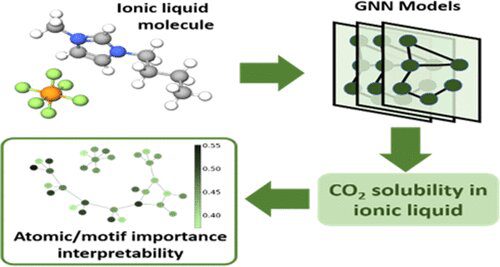Carbon dioxide has the greatest impact on global warming of all greenhouse gases. The Intergovernmental Panel on Climate Change estimates that our planet’s average temperature will rise by around 34 degrees Fahrenheit if we do nothing about it by the year 2100. Amir Barati Farimani has been striving to change the difficulty that researchers and businesses battling global warming have had in finding efficient solutions to absorb and store CO2.
According to Barati Farimani, an assistant professor of mechanical engineering at Carnegie Mellon University, machine learning models hold the potential for finding novel chemical compounds or materials to combat global warming. Machine learning models can effectively and accurately screen potential CO2 storage candidates, and they can even produce ideal compounds that have never existed before.

Barati Farimani has made progress in the identification of ionic liquid molecules using machine learning. Ionic liquids (ILs) are classes of molten salt that, due to their excellent chemical stability and high CO2 solubility, remain in a liquid state at normal temperature, making them the perfect choice for CO2 storage. The characteristics of ILs are strongly influenced by the ion combination. Nevertheless, it is very difficult to exhaust the design space of ILs for effective CO2 storage through conventional studies due to the combinatorial possibilities of cations and anions.
In drug development, graph neural networks (GNNs), which interpret molecules as graphs and utilise a matrix to identify molecular bonds and related features, are frequently used in conjunction with machine learning to create what are known as molecular fingerprints. Barati Farimani has created GNNs and fingerprint-based ML models that can both forecast the CO2 absorption in ionic liquids for the first time.
According to Barati Farimani, their GNN approach predicts the CO2 solubility in ion liquids with a higher degree of precision. GNN directly learns the features from molecular graphs, in contrast to earlier ML techniques that require on manually created features.
Just as crucial as the chemical characteristics these models discover is understanding how they arrive at judgements. This explanation gives scientists more information on how the molecule’s structure impacts the characteristics of ionic liquids from a data-driven approach. For instance, Barati Farmimani’s team discovered that molecule fragments with a chemical interaction with CO2 are more significant than those with a physical one. Additionally, those with fewer connections between hydrogen and nitrogen would be better suited to formalizing a stable chemical interaction with CO2.








